Risques Naturels
Avalanche
Préparé par le AFEM – European Natural Disasters Training Centre (Ankara, Turkey) & the Editorial Board

Une avalanche est une coulée de neige qui se détache et dévale un versant de montagne sous l’effet d’une action mécanique naturelle ou d’une activité humaine.
Dans les terrains montagneux, les avalanches font partie des dangers objectifs les plus graves pour la vie humaine et les biens à cause de leur pouvoir destructeur découlant de leur capacité à déplacer rapidement une masse énorme de neige sur de grandes distances.
Elles peuvent être déclenchées soit par des phénomènes naturels ou par l’activité humaine (déforestation, sports d’hiver, …)
Les avalanches peuvent également être classés en fonction notamment de:
- Sa cause: naturelle ou humaine
- La qualité de la neige: humide ou sèche
- Son glissement: sur une surface de la neige précédente ou avec la surface de la neige précédente
An avalanche is a rapid flow of snow down a slope, from either natural triggers or human activity. In mountainous terrain avalanches are among the most serious objective hazards to life and property, with their destructive capability resulting from their potential to carry an enormous mass of snow rapidly over large distances.
All avalanches share common elements:
- a trigger which causes the sudden rupture of the snow pack,
- a starting zone from which the initial volume of snow is detached,
- a slide path along which the avalanche flows,
- a run out zone where the avalanche comes to rest;
- a debris deposit which is the accumulated mass of the snow avalanche once it has come to rest.
Sometimes, the deposit may be a mixture of snow, ice, soil, rocks and vegetation debris.
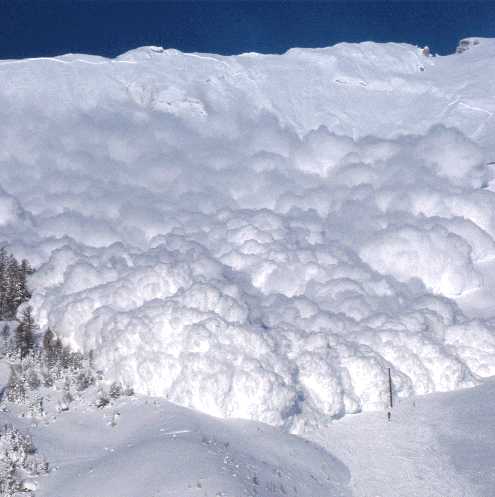
Avalanches are classified by their morphological characteristics, and are rated by either their destructive potential, or the mass of the downward flowing snow.
Here we will present avalanches with their general properties:
- Slab Avalanches
- Loose avalanches
- Slush Avalanches
- Dry avalanches and powder avalanches
SLAB AVALANCHES: have different names according to, moisture content of snow layers, slope cover (rock, soil or tree), and fracture depth.
Dry Slab Avalanche: in this type of avalanches, a low moisture, cohesive snow layer (snow slab) has a thinner, weaker failure layer beneath it. Once the snow slab is cut out around all boundaries by fractures, the slab snow avalanche occurs. Densities of slab layers are between 100 and 300 kg/m3.
Wet Slab Snow Avalanche: this type occurs by means of three principal mechanisms: 1- loading by new precipitation (rain), 2- changes in strength of a buried weak layer due to water percolation or 3- by water lubrication of a sliding surface, which may be partially or totally impermeable to water. Sometimes, failure affects the whole snow pack and the ground surface is uncovered after the avalanche has occurred. This type of avalanche is called « ground avalanche ».
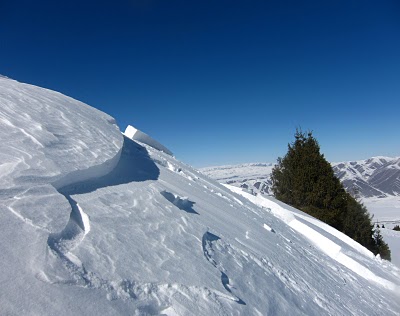
LOOSE AVALANCHE: loose snow has little or no cohesion. Loose snow avalanches form near the surface and they involve near surface snow on initiation. Loose snow avalanches are easily recognizable because they start from a point and the displaced mass of snow forms a triangular pattern on descent. Natural loose snow avalanches are triggered by a local loss of cohesion due to snow metamorphism or the effects of sun or rain. Often the initiation is near rock outcrops, which cause locally high snow temperatures.
Dry loose avalanches: they commonly form under cold, relatively windless conditions which favour a low density superficial snow pack.
Wet loose avalanches: they take place after heavy melting of the snow pack caused by warming by the sun, rain or heat transfer from warmer surfaces.
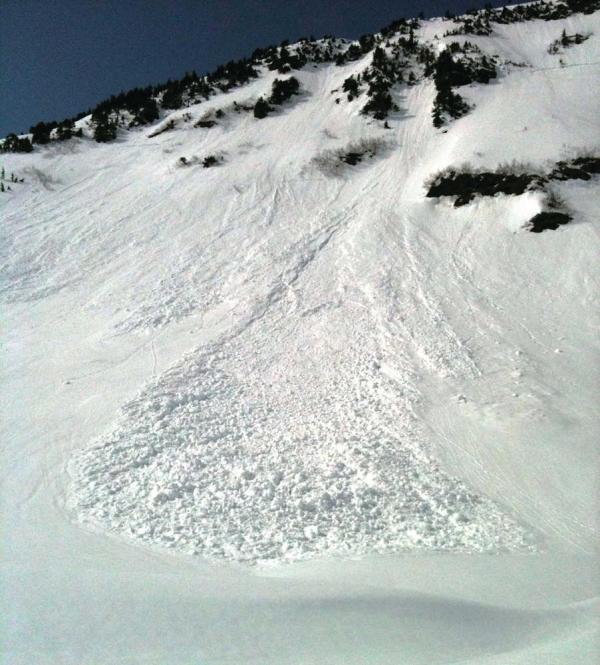
SLUSH AVALANCHES: in slush avalanches the flowing of snow is similar to the flowing of mud with high water content. Measured densities of saturated snow in slush snow avalanche deposits may exceed 1000 kg/m3 due to the mixture of water, ice, snow and entrained earth or rock material. They are usually partially or totally saturated with water. The temperature of the snow is round 0 °C. The highest frequency of occurrence at high latitudes is partially due to the rapid onset of snowmelt in spring as the sun returns to provide direct, intense radiation input to snow packs that have been previously subject to strong temperature gradients and a lack of solar radiation input.
Many examples of this avalanche type can be found in Northern Norway and Alaska.
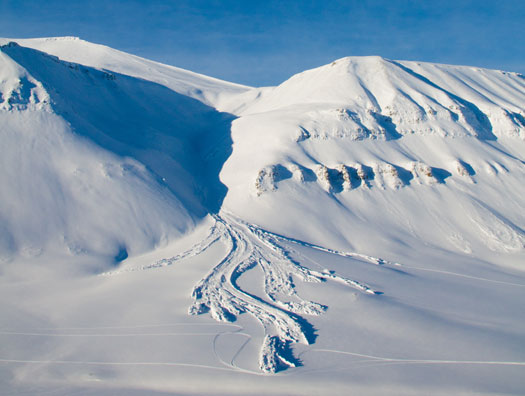
DRY AVALANCHES AND POWDER AVALANCHES: if moisture content is low, density is near 100 kg/m3 or less, snow temperatures are less than 0 °C and snow depth is more than 1 m, those types of snow avalanches may occur. After the snow avalanche starts, a dust cloud which contains snow and air forms.
Dry Avalanche: in this type of snow avalanche there is a dense core of snow at the bottom of the moving mass. It is estimated that about one-third of the space in the core is filled with snow particles and about two-thirds is air. In the dust cloud that may develop above, only about 1% of the space is filled with snow particles and 99% is air. Therefore the density is about a factor of 10 higher in the core than in the dust cloud. Usually the depth of flow of the core is less than 5 m, but the depth of dust cloud can be tens of meters. Deceleration is rapid in run out zone.
Powder Avalanche: are those in which a dense core of snow at the bottom is absent. Any high-speed dry snow avalanche will have a powder or dust cloud associated with it and tends to make powder avalanches and dry flowing avalanches look similar. To distinguish between powder and dry snow avalanches, one must make an observation of the deposit, of the destructive effects, or of flowing snow properties to determine the presence of a core. In a true powder avalanche, almost all of the material is suspended by turbulent eddies. They often form by falling ice (or sometimes by ice avalanches) from steep icefalls. Their speed may sometimes be more than that of dry avalanches, but since their density is much less, their destructive power is less.
Avalanches only occur when the stress on the snow exceeds the shear, ductile, and tensile strength either within the snow pack or at the contact of the base of the snow pack with the ground or rock surface. A number of the forces acting on a snow pack can be readily determined; for example, the weight of the snow is straightforward to calculate, however it is very difficult to know the shear, ductile, and tensile strength within the snow pack or the ground. These strengths vary with the type of snow crystal and the bonding between them. The thermo-mechanical properties of the snow crystals in turn depend on the local conditions they have experienced such as temperature and humidity.
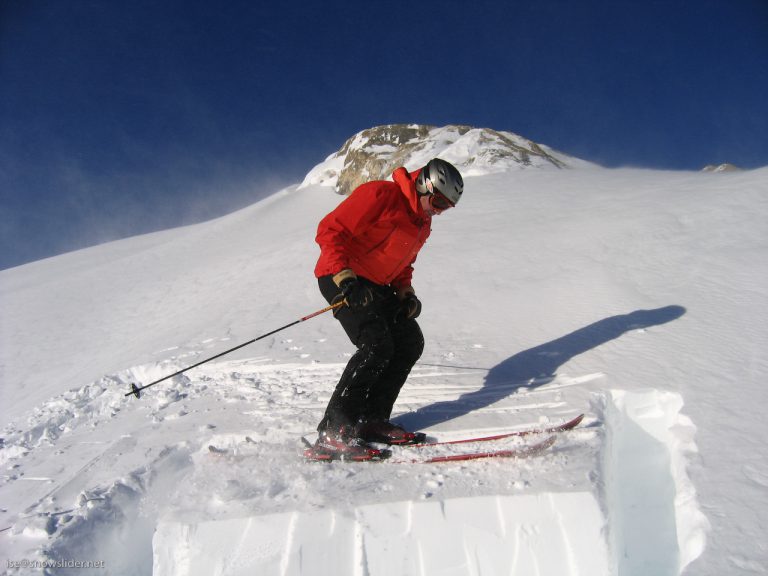
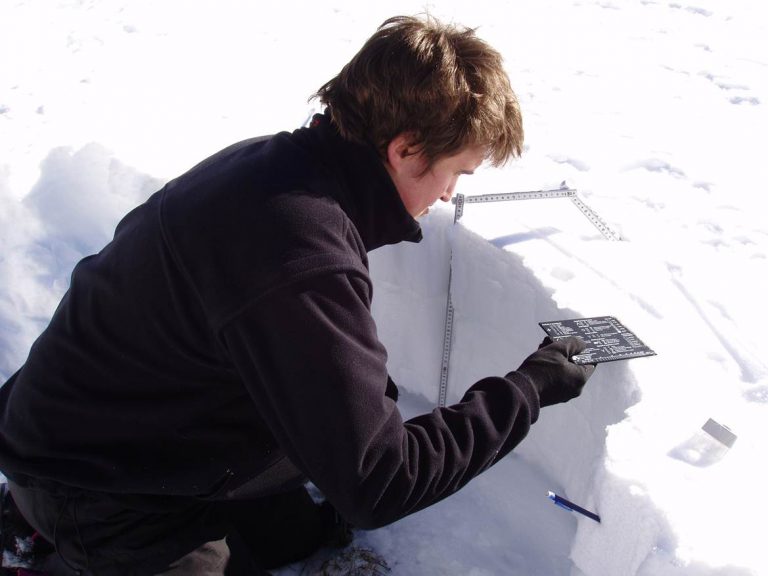
An avalanche typically occurs in mountainous terrain. Slopes flatter than 28 degrees or steeper than 55 degrees typically have a lower incidence of avalanche occurrence; likewise slopes with windward and sunny exposure have a lower incidence of avalanche hazard.
Generally, causes of avalanche formation can be found within 7 sets of factors (EVALUATION of all these factors is always required in snow avalanche prediction):
- Slope inclination
- Snowpack conditions
- Wind action
- Slope direction
- Temperature
- Weak snow layers
- Ground surface conditions
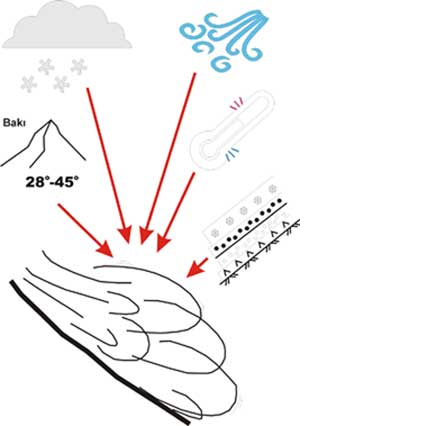
Avalanche is a nivo-meteorological incident. If all factors (meteorologic, topographic, snow cover…etc) are in place, the avalanche occurs. Depending on climatic condition, return period varies from few times per year to once in a few centuries.
Avalanches, according to their intensity (or magnitude), can cause more or less heavy damage to structures and infrastructures, ultimately leading to their complete destruction. Therefore, wherever vulnerable elements are exposed to the avalanche threat, it becomes essential that territorial planning carefully evaluates the actual hazard level, in case organizing protection measures against future events. Moreover, avalanches can directly affect people, injuring or even killing them. More and more frequently, the media report of avalanches injuring or killing people responsible for their triggering; this happens very often in backcountry skiing, whenever skiers trigger the rupture of the snow pack, already naturally instable
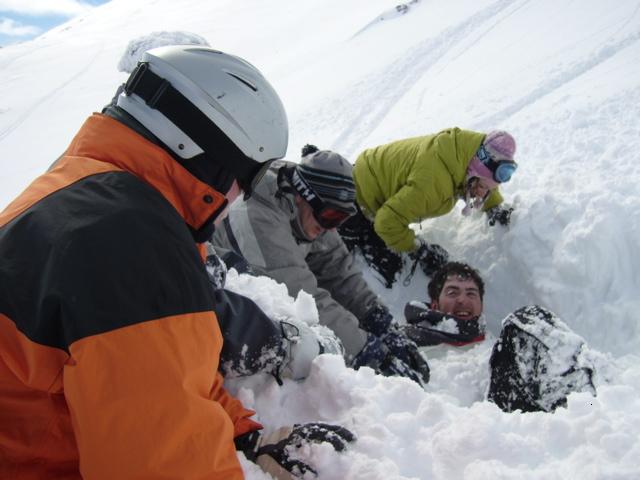

Avalanches are always caused by an external stress on the snow pack, They are not random or spontaneous events. Natural triggers of avalanches include additional precipitation, radiative and convective heating, rock fall, ice fall, and other sudden impacts; however, even a snow pack held at a constant temperature, pressure, and humidity will evolve over time and develop stresses, often from the downslope creep of the snow pack. Human triggers of avalanches include skiers, snowmobiles, and controlled explosive work. The triggering stress load can be either localized to the failure point, or remote.
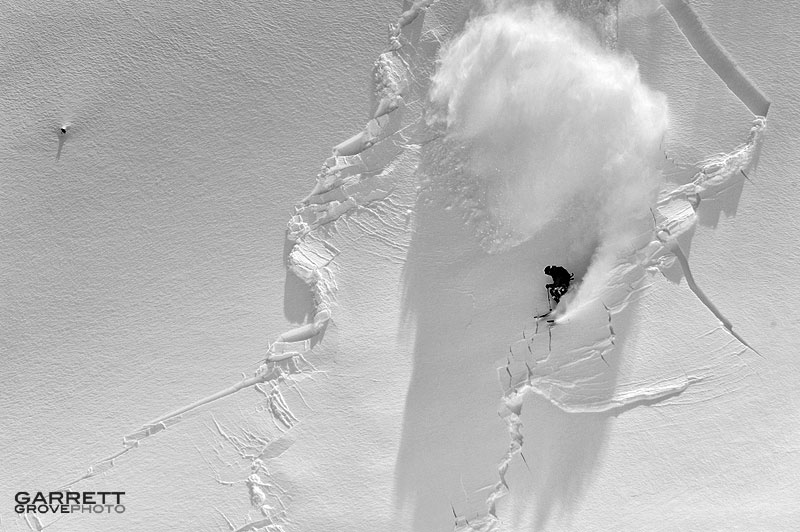
When the human factor enters into the avalanche incident, this natural event turns into a disaster. According to records, most of the avalanche accidents are caused by human factors not only as a load, but because of ignorance or carelessness.
Since the majority of human-triggered snow avalanches (as it has been said beforehand) occurs after the passage of skiers on already unstable snow packs, the first prevention measure to be undertaken, so as to strongly reduce the negative effects (in this case on human health) is with no doubt a correct behaviour of skiers, above all off the ski runs. That correct behaviour implies consulting avalanche bulletins before going backcountry skiing, the knowledge of the snow pack conditions and of the safest tracks to follow and, not least, a proper equipment comprising: active sensors in case of avalanche burial (such as Arvas etc.) and other devices for personal protection or rescue in case of avalanche danger, such as helmets, inflating jackets to “swim on the avalanche”, small portable oxygen tanks, portable shovels, foldable probes for searching buried people etc.).
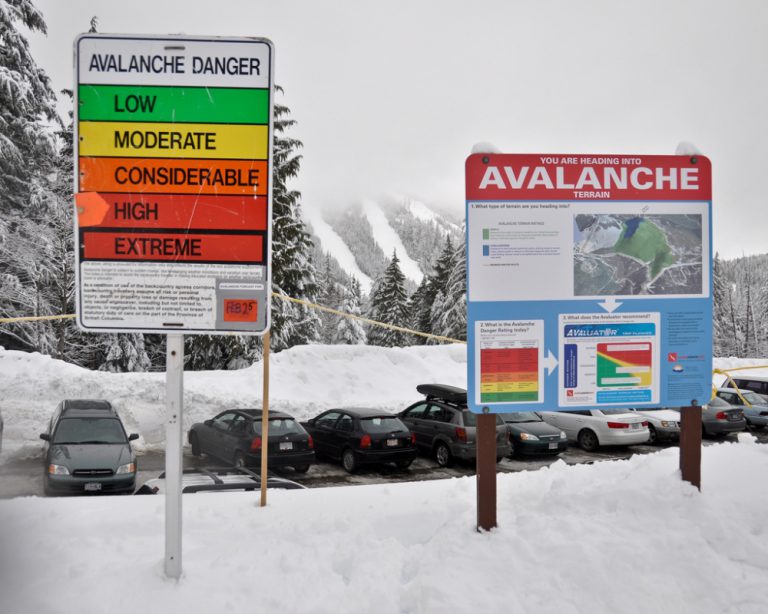
Snow observations (include stability analysis) are the most important part of avalanche forecasting. First purpose of snow observations is tracing of physical and nivological properties of snow cover to reach the critical levels. All types of snow stability methods are made in open areas (see figures 5 and 6 from question 3).
Mainly conventional meteorological observations and several in-situ observations are used to predict the possibility of avalanches by a network of professional snow pack observers, which have to be constantly trained.
All snow and weather data gathered within a certain area is analysed at special data-processing centres (such as avalanche centres, hydro-meteorological centres etc.) that are responsible for writing public avalanche bulletins; those bulletins identify, through a standardized danger scale, zones with different avalanche hazard (or risk, according to the adopted terminology). The bulletins are then publicized through all possible means (such as internet, mobile phones, radio, TV, leaflets etc.) so that the majority of people interested may read them before going out.
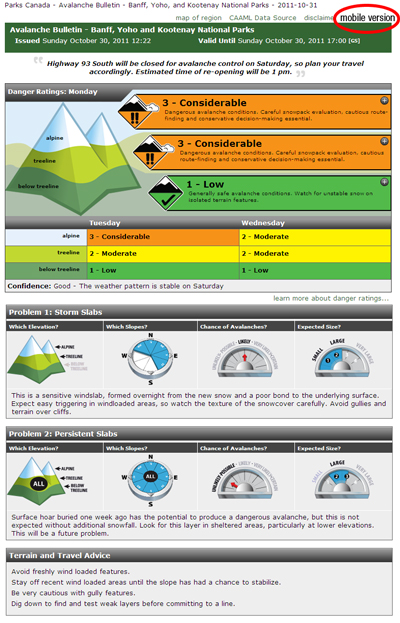
The answer to this question is « Yes » despite that prevention is sometimes difficult and very expensive. There are a lot of techniques for reducing the effects of snow avalanches. According to application sites, types of avalanches, sizes of effecting area, long-term or short-term results and their costs, these techniques can be classified into two groups:
A) Permanent Prevention Techniques
A.1) Active Permanent Prevention Techniques (Applied in Starting Zone)
Earth Terrace, Reforestation, Pilings, Tripods, Snow Bridges, Snow Nets, Snow (Wind) Fences, Wind, Panels, Wind Baffle, others
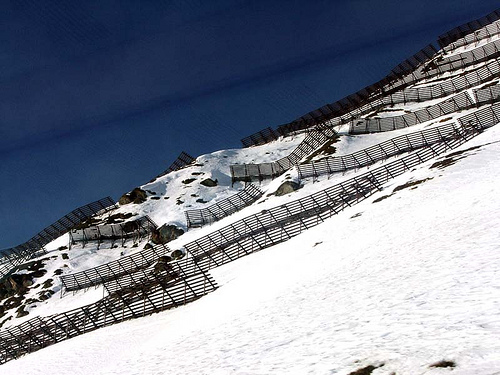
A.2) Passive Permanent Prevention Techniques (Applied in Run-out and Stopping Zones)
Deflecting Wall, Arresting Walls, Avalanche Dams, Splitter, Retarding Mound and Arresting Dike, Avalanche Tunnels, Road Warning Sign and Closure Systems, Building Reinforcement Techniques, Reinforcement Techniques For Substructures.
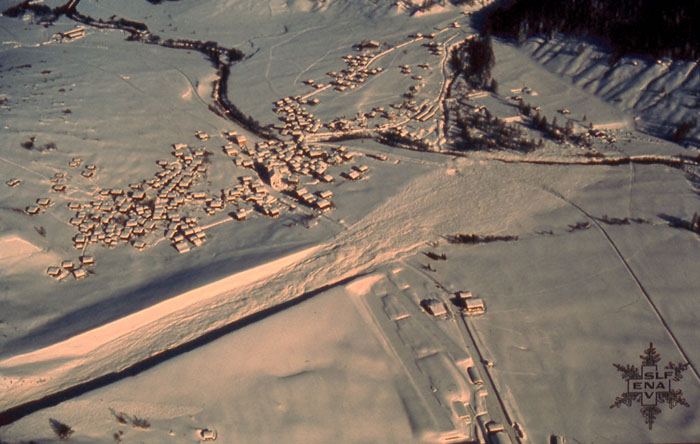
B) Temporary Prevention Techniques
B.1) Active Temporary Prevention Techniques
Catex (cable Transporter Explosives), Gaz-Ex (Gaseous Explosives), Hand Charges, Avalhex…
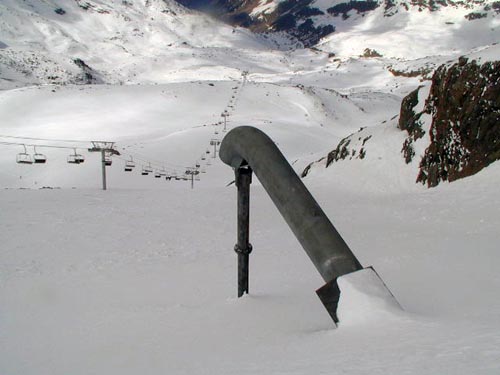
B.2) Passive Temporary Prevention Techniques
Snow and Avalanche Observations, Mapping, Evacuation of Avalanche Risk Areas and Forbidden Entrance.
To mitigate avalanche consequences, increasing awareness of public and administrators by avalanche trainings, being conscious and careful in avalanche prone areas are needed besides avalanche measures.
There are also passive measures that are used to secure structures and infrastructures from the possible avalanche impact. Among those we can mention the following: tunnels to protect roads and railways, deviation wedges uphill of buildings, transversal barriers or walls with respect to the avalanche path etc. Anyhow, the best mitigation possible is a proper territorial planning, presuming a good knowledge of the avalanche hazard of the area and a hazard zonation that is done also using numerical models simulating snow avalanche dynamics.
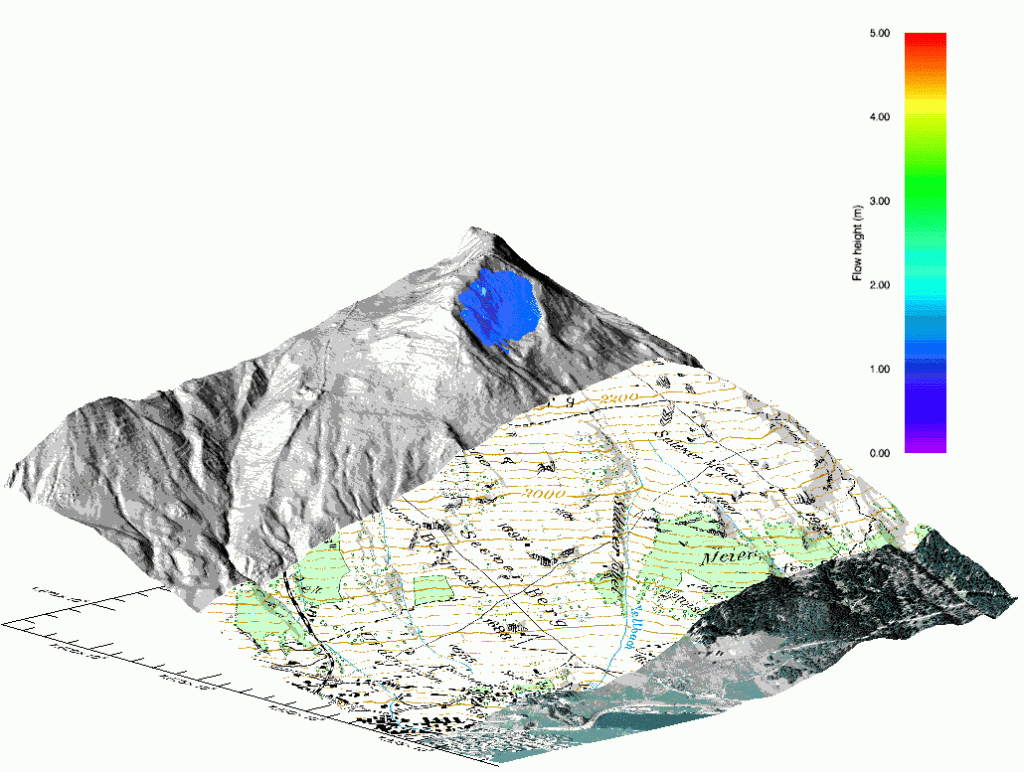
If you cross potential avalanche areas and do not get sufficient avalanche education or if you are careless, you can be caught by an avalanche immediately ! Believe ! You do not want to be in that situation.
Powerful avalanches have the capability to entrain ice, rocks, trees, and other material on the slope. In mountainous terrain avalanches are among the most serious objective hazards to life and property, with their destructive capability resulting from their potential to carry an enormous mass of snow rapidly over large distances.
Even small avalanches are a serious danger to life, even with properly trained and equipped companions who avoid the avalanche. Victims caught in an avalanche are advised to try to ski or board toward the side of the avalanche until they fall, then to jettison their equipment and attempt swimming motions.
When you are caught by an avalanche, panic starts and you loose your direction. Materials entrained by the avalanche may hit you. Breathing becomes more difficult. You can feel the compression of snow around your body during the deceleration of the avalanche, but moving in the snow mass is getting harder and harder. Breathing is difficult because of the snow entering your mouth and nose. Your body starts to lose heat. As the snow comes to rest, an attempt should be made to preserve an air-space in front of the mouth and try to thrust an arm, leg or object above the surface, assuming you are still conscious. If it is possible to move once the snow stops, enlarge the air space, but minimize your movements to reduce your oxygen consumption. After a time, oxygen deficiency and hypothermia start to increase their effects. It is vital that everyone surviving an avalanche is used in an immediate search and rescue operation, rather than waiting for help to arrive. Additional help can be called once it can be determined if anyone is seriously injured or still remains unaccountable after the immediate search (i.e., after at least 30 minutes of searching).
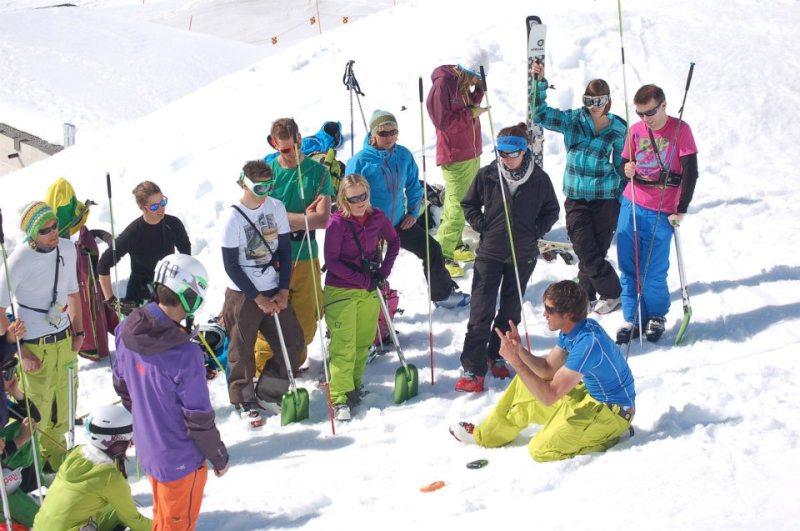
Avalanches are not easily predictable and often enough can produce destructive results. Avalanche cartography deals with the causes and consequences of such incidents and tries to depict them in a variety of ways.
Avalanche hazard maps incorporate mainly large-scale topographic elements with thematic features. In such maps, both direct and indirect aspects of avalanches are considered according to aerial photo interpretation and field surveys.
Avalanches become a “risk” when people or physical assets are situated within the reach of the “dangeros process”. Avalanche risk maps show the vulnerability of all values in avalanche hazard areas.
